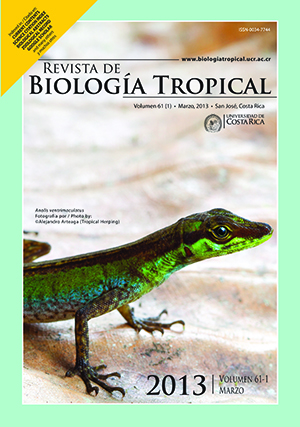Abstract
The plant, and especially the fruit of Lagenaria breviflora is widely used in folklore medicine in West Africa as a herbal remedy for the treatment of human measles, digestive disorders, and as wound antiseptics (e.g. umbilical incision wound), while livestock farmers use it for Newcastle disease and coccidiosis treatment in various animal species, especially poultry. The purpose of this study was to contribute with new information on this plant leaves extract effect, as few studies have considered their effects. We collected fresh leaves of Lagenaria breviflora from the school farm of the University of Ibadan, Nigeria in May 2011. Dried leaves were ground and a 200g sample was used to prepare the extract. The grounded leaves material was allowed to shake in 1 000mL distilled water for 48h, in an orbital shaker at room temperature of 24°C. The obtained extract was filtered and concentrated to dryness under reduced pressure at 40ºC, and the thick solution was lyophilized, for a final extract yield of 12.6%. Standard phytochemical methods were used to test the presence of saponins, alkaloids, tannins, anthraquinones, cardiac glycosides, cyanogenetic glycosides and flavonoids. The anti-inflammatory activity of the aqueous leaf extract of the plant was assessed using carrageenan-induced paw edema and histamine-induced paw edema in rats. The analgesic effect was determined using the acetic acid writhing method as well as formalin test in mice. Our results showed that the extract at 100 and 200mg/ kg body weight significantly reduced the formation of the oedema induced by carrageenan and histamine. In the acetic acid-induced writhing model, the extract showed a good analgesic effect characterized by reduction in the number of writhes when compared to the control. The extract caused dose-dependent decrease of licking time and licking frequency in rats injected with 2.5% formalin, signifying its analgesic effect. These results were however less than those of indomethacin, the reference drug used in this study. Since the plant extract reduced significantly the formation of oedema induced by carrageenan and histamine, as well as reduced the number of writhes in acetic acid-induced writhing models and dose-dependent decrease of licking frequency in rats injected with 2.5% formalin, the results have validated the basis for the traditional use of Lagenaria breviflora against inflamed purulent wounds, swellings, and bruises seen in some infectious diseases such as New Castle disease.##plugins.facebook.comentarios##
Downloads
Download data is not yet available.






